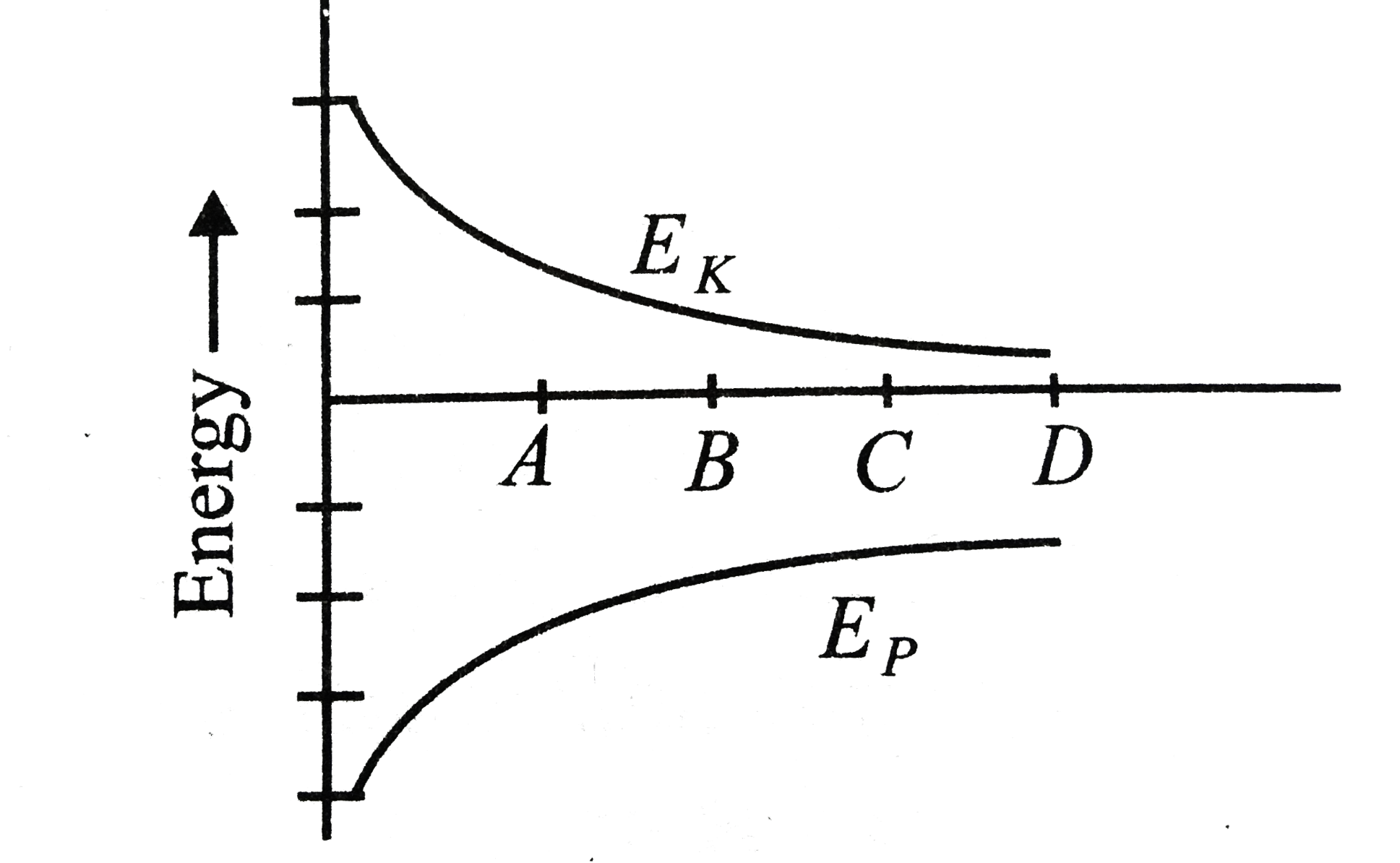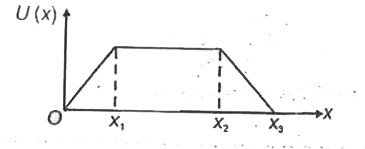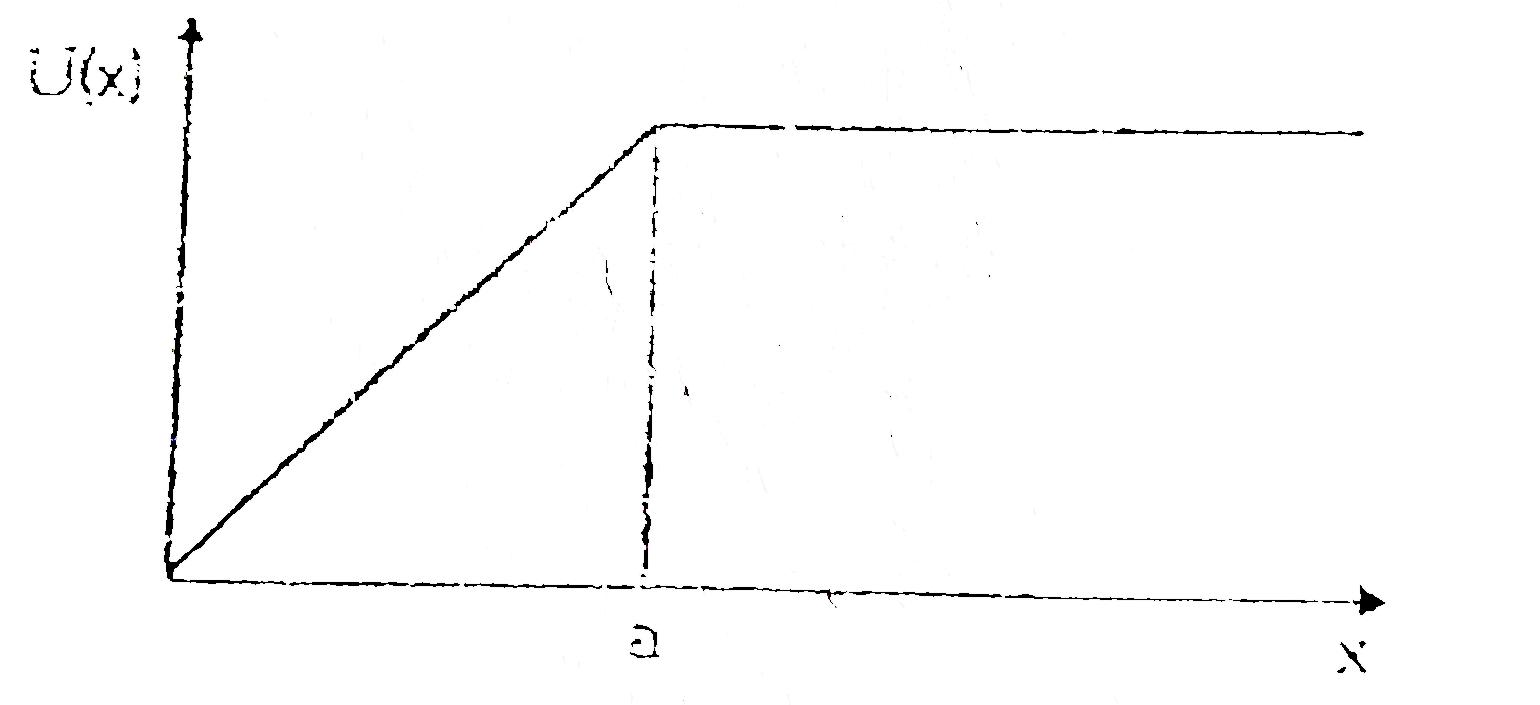Figure shows the kinetic energy (Ek) and potential energy (Ep) curves for a two-particle system. Name the point at which the system is a bound system.

A
B
C
D
The correct Answer is:A, B, C, D
For all the points EP>EK (numerically), So, the total energy is negative. Thus, The system is a bound system corresponding to all the points.
Topper's Solved these Questions
- GRAVITATIONBOOK - CENGAGE PHYSICS ENGLISHCHAPTER - GRAVITATIONEXERCISE - Multiple Correct
24 Videos
- GRAVITATIONBOOK - CENGAGE PHYSICS ENGLISHCHAPTER - GRAVITATIONEXERCISE - Assertion- Reasoning
13 Videos
- GRAVITATIONBOOK - CENGAGE PHYSICS ENGLISHCHAPTER - GRAVITATIONEXERCISE - Subjective
15 Videos
- FLUID MECHANICSBOOK - CENGAGE PHYSICS ENGLISHCHAPTER - FLUID MECHANICSEXERCISE - INTEGER_TYPE
1 Videos
- KINEMATICS-1BOOK - CENGAGE PHYSICS ENGLISHCHAPTER - KINEMATICS-1EXERCISE - Integer
9 Videos
Similar Questions
Figure shows the kinetic energy (Ek) and potential energy (Ep) curves for a two-particle system. Name the point(s) at which the system is a bound system.

View SolutionThe correct graph representing the variation of total energy (Et), kinetic energy (Ek) and potential energy (U) of a satellite with its distance form the centre of earth is
View Solution
Knowledge Check
The potential energy of a system increased if work is done
Aupon the system by a non conservative forceBby the system against a conservative forceCby the system against a non conservative forceDupon the system by a conservative force
What is the potential energy of dipole with charge particles system as shown in (Fig. 3.96) ?
 .
.
View SolutionName the form by which energy enters living system and leaves the system.
View SolutionThe variation of potential energy U of a system is shown in figure. The force acting on the system is best represented by

View SolutionThe potential energy of a system increased if work is done
View SolutionThe potential energy of a system increased if work is done
View SolutionPotential Energy U(x) and associated force F(x) bears the relation F(x)=−ddxU(x).
Dependence of potential energy of a two−particle system separation x between them is shown in the following figure.

Which of the following graphs shows correct variation in assoicated force F(x) with x?
View SolutionKinetic energy of a particle on the surface is E0 and potential energy is−E02.
(a) Will the particle escape to infinity ?
(b) At some height its kinetic energy becomes 0.6E0. What is potential energy at this height ?
(c) If the particle escape to infinity , what is kinetic energy of the particle at infinity ?
View Solution
